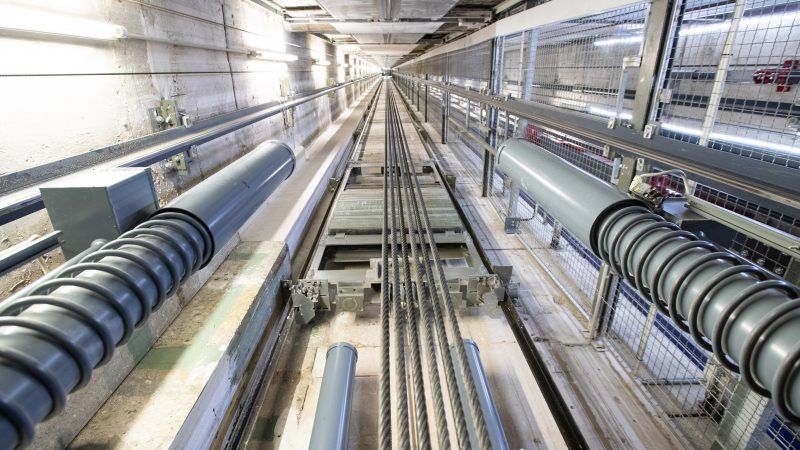New York Might License Elevator Mechanics to Solve a Public Safety Problem That Doesn't Exist
Those claiming that elevators are a public safety risk likely have ulterior motives.

Residents of New York City will take 35 million elevator rides today. That works out to an astronomical 12.77 billion elevator rides per year. An average of 2.75 of those rides end in a fatal accident. That's 404 times less likely than an ocean swimmer getting attacked by a shark.
Is that a problem that demands government action? Some lawmakers seem to think so. The State of New York is considering a bill to require licenses for elevator mechanics. Some recent elevator accidents, the legislation's authors argue, were caused by insufficiently trained mechanics.
In fact, there's good reason to doubt that New York has less safe elevators than the rest of the country or that requiring licenses would make them safer. The chief effect of those licenses would be to make it harder for New Yorkers to find jobs in that field.
Thirty-five states require licenses for workers in elevator repair or installation. There's not much empirical research comparing elevator safety on a state-by-state basis, but it's illuminating to compare elevator safety in license-free New York City to elevator safety across the country.
Nationally, there are 325 million elevator rides per day, or 118.625 billion rides per year—and there are roughly 27 elevator-related deaths a year, according to ConsumerWatch.com. That comes to .00000000023 deaths per elevator ride across the United States.
In New York City, there are 35 million elevator rides per day, or 12.775 billion rides per year. According to The Real Deal, which covers New York real estate, the city has seen 22 confirmed deaths in elevator-related accidents since 2010, or an average of 2.75 elevator deaths per year. That comes to .000000000215 deaths per elevator ride in the Big Apple.
In other words, the death rate per elevator ride is actually a little lower in New York City than in the rest of the country.
Meanwhile, stairs cause 1,600 deaths a year in the United States. By LiveScience.com's calculations, that makes them significantly more dangerous than taking the elevator.
Can government licensing make New York's elevators marginally safer? It's hard to tell for sure when you're working with numbers this tiny.
But this certainly seems like another instance where occupational licensing laws are being justified on flimsy public safety or consumer welfare grounds, even though many analyses of specific licenses have shown little connection between the existence or stringency of the license and public health, safety, or service quality.
Instead, licensing laws tend to enrich license holders, by protecting them from competition, at the expense of consumers, who pay higher prices, and at the expense of potential new workers, who face higher barriers to entry.
The most likely result of this bill, if it is passed, is to create new barriers to entry for workers looking to find a new job. They would have to pay a fee (licensing fees average $279 in New York), and they would have to either complete a certification program from an industry group, hold an out-of-state elevator mechanic license, or have four full years of experience in elevator maintenance, construction, or repair. Elevator mechanics make well above the average wage, and are a growing field; new fees and certification requirements will reduce the availability of a good middle-class job.
Occupational licensing laws currently on the books already place a significant burden on New York's economy. According to an analysis from the University of Minnesota economist Morris Kleiner, excessive licensing laws cost the state over 100,000 full-time jobs and almost $13.1 billion in economic growth. Instead of stacking on another licensing requirement, New York lawmakers should consider rolling back some of those existing regulations.
Show Comments (16)